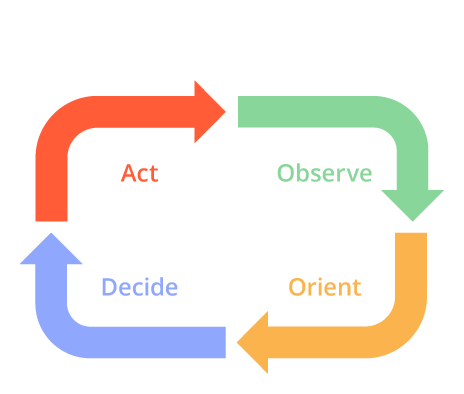Warning: Trying to access array offset on value of type null in /nas/content/live/hadean2022/wp-content/themes/blankslate/functions.php on line 373
Last week I was privileged to be part of a brief with our Partners at Cervus Defence and Security, central to which was the need to support the act of decision making. In this case the Cervus Forge concept, powered by Hadean’s distributed cloud computing platform, seeks to rapidly generate objective data that can contribute to making better, faster, more reliable decisions.
At the heart of warfighting is the ability to make timely decisions. It is a human endeavour that has occupied the minds of the great military academics, strategists, visionaries and practitioners, from the Soldat to the Generalfeldmarschall. As you read this, men and women in conflict areas, or in the maintenance of the rule of law are making decisions that are matters of tactical precision, grand strategy or, in its rawest form, life and death.
To make these decisions, whether over the merest fractions of seconds, a 12 hour military planning cycle or over months and years, one must follow a simple process: identify information and factors, align those to the aim or outcome, consider options, make the decision, and then act upon it. Data science can support all of these elements bar the making of the decision itself – this remains the lonely preserve of the man or woman in the chain of command.
US Air Force Colonel John Boyd’s OODA (Observe, Orient, Decide, Act) loop characterises this extremely well and is used prolifically in military decision making, particularly when assessing where one might gain an advantage. ‘Get inside his OODA loop!’ would be the cry, i.e. create the opportunity to make a good decision quicker than the enemy – the UK’s Manoeuvrist Approach relies on this.
What we must do now is support the subjective human process of making (and being accountable for) the decision with objective insight. The challenge we face before considering the technological options, is one of data:
- Which data?
- How reliable is it?
- How much is helpful?
- How is it presented?
- Can the data inputs be suitably adjusted to provide comparable data outputs that could create an optimum decision? Can this be done quickly enough?
Addressing the data balance, whilst a matter of technology, remains bound by the limitations of human capacity; too much information is as unhelpful as too little. Data must also be presented in a way that allows the human brain to ingest it in a manageable way.
This is also a challenge of time – how quickly does the decision need to be made? This will have an enormous impact on the amount of objective data that can be obtained to support the decision.

What we at Hadean are able to do now is offer a Decision Support toolset to speed up the automation necessary to generate insights, and AI, ML and experience will continue to improve the data balance; our work with Cervus is pioneering this within the Defence sector, and we have been fortunate enough to have developed similar decision support models with Astrazeneca and Imperial College. The multitude of scenarios we are able to run concurrently to provide Capability or Concept Development insights could quite easily be refined and refocused to support operational course of action (COA) development and decision making.
Platform technology that enables the rapid repetition of scenarios, easily manipulated to highlight points of differentiation and comparison, will continue to contribute crucial objective data, but the decision itself will always remain the responsibility of the human in the loop.
Stay tuned for the rest of this series and find part one here and part two here.
